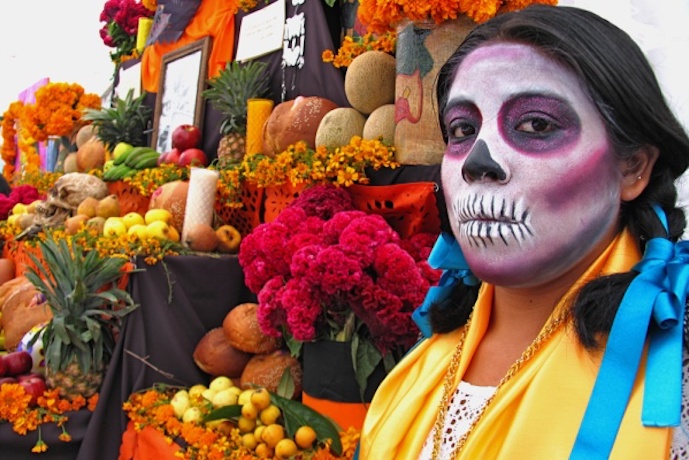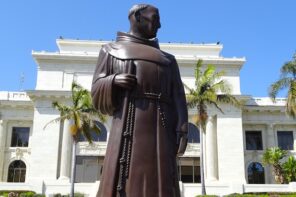When my best friend died of cancer earlier this year, at age 44, her body was cremated, a choice now made by close to half of the people in the US. She wanted her ashes to be scattered in various places that were meaningful to her, including the arena where the Boston Celtics, her favorite basketball team, play.
Of course her wishes would eventually be honored by her friends and family, but that couldn’t happen for a few days or weeks at least. So after the funeral, her partner brought a cardboard box containing her ashes into the house and set them on the kitchen counter. Seized with what was perhaps the instinctive desire to be in physical contact with her again, I asked to see them.
When the box was opened for me, I was overwhelmed. Here in a box on the counter was what was left of the body of someone I loved, someone I used to stay out all night dancing with, someone who I had spoken to just a week before on the phone, her laughter weakened but still familiar. When I thought about her ashes being scattered around Boston I felt a momentary panic. Where could I ever go to find her again?
Last week, just in time for the Feast of All Soul’s Day, celebrated each year on November 2, the Catholic Church’s Congregation for the Doctrine of the Faith released a new Instruction regarding the burial of the dead and the treatment of ashes in the case of cremation. The instruction is relatively short and straightforward. In brief, the Church continues to allow cremation, something which has been permitted since 1963, but clarified first that burial of the body is preferred over cremation, and second that in the case of cremation, scattering of the ashes, or keeping the remains in a private or domestic setting is strictly forbidden.
“It is not permitted to scatter the ashes of the faithful departed in the air, on land, at sea or in some other way, nor may they be preserved in mementos, pieces of jewelry or other objects.” Instead, all cremated remains must be buried in a cemetery or other sacred ground. They cannot be divided up, shared, or retained in any other way.
What business is it of the Catholic Church what anyone does with their own dead body, or with the body of a dead loved one? This question was asked immediately, and repeatedly, in response to news reports on the Vatican document. CNN, the Washington Post, the New York Times, the National Catholic Reporter and others reported on the new teaching, and in the comments sections of these pieces, there was a great deal of outrage from Catholics and non-Catholics alike.
Some complained that the Church just wanted more money and that the Church was looking for an angle to get people to pay up for pricey lots in Catholic cemeteries. Irish Independent columnist Liam Collins was apoplectic accusing the Church of having nothing better to do than to dream up new ways to torment the faithful. But the most common objection, the one expressed more than any other, seemed to be about who controls the body. One commenter in the National Catholic Reporter put it this way: “The issue is choice. This choice should be up to the person to make before death, or for the family itself to make. The hierarchy is trying to impose its will on people instead of respecting their choices as individuals and as families.”
Sex, reproduction, and now death. It’s bad enough that the Church wants to tell people who to have sex with, while taking away the choice about whether or not to have children when they do. Now we can’t even decide what do with our bodies when we’re done with them? The Church’s answer, one which flies in the face of nearly everything we assume about selfhood in 21st century America is this: No, you can’t. Because your body isn’t yours alone. It belongs to you but it also belongs to God and especially to the community.
In the Catholic tradition there is an ongoing and active relationship between the living and the dead. The communion of saints is a community which includes both living and dead people. Since they are still important members of the community in order to “get together” with our dead friends and relatives, we need a place to meet them. For this reason, according to the Church, the person’s body should not be dissolved in the ocean or scattered in a National Park.
On the Day of the Dead, or All Soul’s Day, Catholic Christians in Mexico and many other cultures visit their dead, picnic in cemeteries, tell stories, cook favorite foods which they bring to their dead family members. This acknowledgment of the continuity of relationships after death is at the center of the new instruction. The Catholic Church says burial in sacred ground is better than keeping the remains at home or scattering them in various places because it acknowledges that the person is a member of the human family. Also, it stops us from being erased altogether from the human story because even when our people are gone we may still be remembered. “It prevents the faithful departed from being forgotten, or their remains from being shown a lack of respect, which eventuality is possible, most especially once the immediately subsequent generation has too passed away.”
We instinctively and quite rightly recoil at the idea that our bodies might not be solely our own while we are still using them. But when it comes to the bodies of the dead, the Vatican’s new instruction is oddly comforting, despite its apparent lack of respect for the wishes of the individual. Insisting on the integrity of the dead body and its burial in hallowed ground is insistence that our bodies are valuable, not just to us, but to those we love, and to the world.





